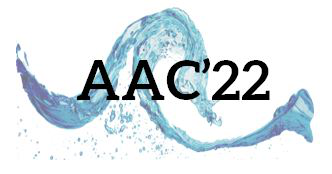Speaker
Description
Measurements of Radio Frequency (RF) emission may be a useful diagnostic for electron dynamics in laser-plasma interactions. Such radiation can also be detrimental as a significant source of noise for other diagnostics. EMP measurements were made during interactions of high-power short-pulse lasers with gaseous density targets at the University of Michigan. In a nitrogen-doped helium target experiment with two collinear, time-separated laser beams, EMP was maximized at a particular timing between the two beams. The increase in RF was correlated with the X-ray signal. However, there was also a population of shots where simultaneous increases in the X-ray and electron signal were observed, but the RF was not significantly increased. Potential explanations for this phenomenon will be discussed, using results from particle-in-cell (PIC) simulations to identify the physical mechanisms.
Acknowledgments
This work has been funded by UKRI-STFC Grant No’s ST/P002048/1 and ST/V001655/1 along with UKRI-EPSRC Grants No.’s EP/R029148/1 and No. EP/L000237/1. The support from the US Department of Energy’s Office of Fusion Energy Sciences’ LaserNetUS K083 grant allowed for access to the HERCULES laser facility.

